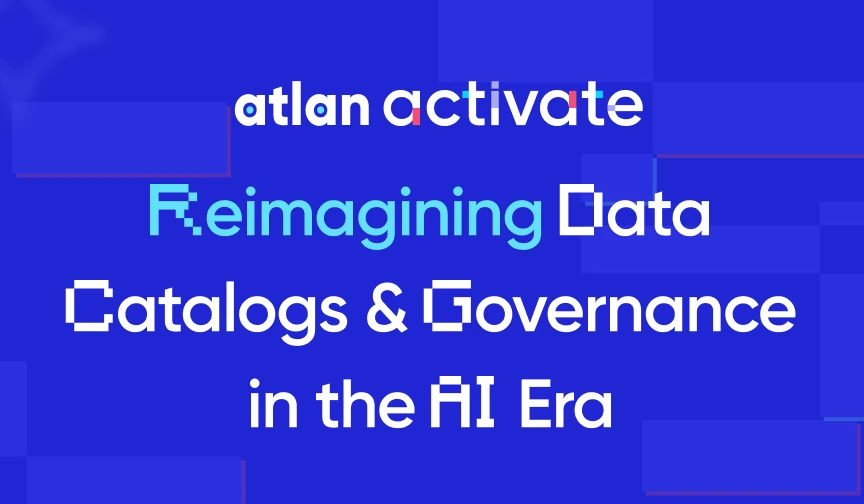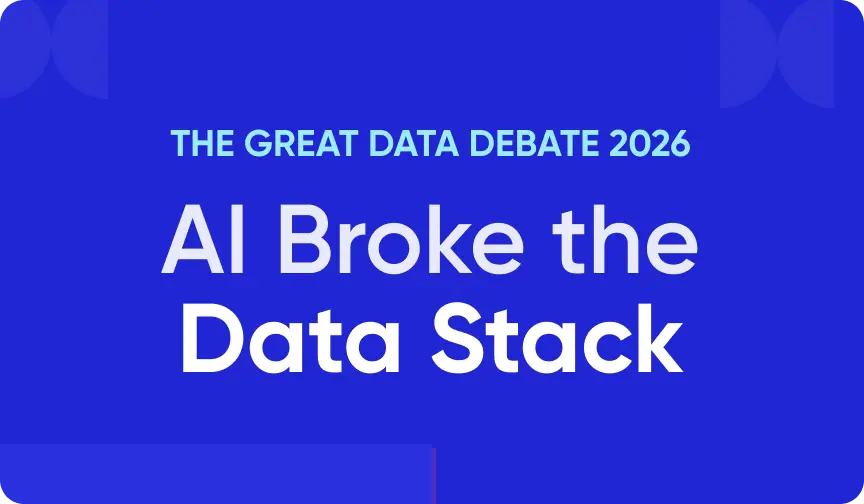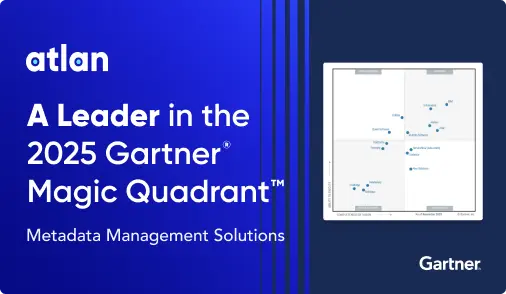How Does Databricks AI/BI Genie Drive Conversational Analytics Using GenAI?
Databricks AI/BI Genie explained
Permalink to “Databricks AI/BI Genie explained”Summarize and analyze this article with 👉 🔮 Google AI Mode or 💬 ChatGPT or 🔍 Perplexity or 🤖 Claude or 🐦 Grok (X) .
Databricks AI/BI Genie is a no-code natural language interface that you can use to interact with data in your Databricks lakehouse. It relies heavily on metadata, whether it is technical or business-related, to support conversational analytics.
Behind the scenes, it uses a range of large language models to facilitate generative AI-based conversational business intelligence.
“Business users can ask questions like “How is my sales pipeline?” and Genie will answer in a combination of text summaries, tabular data and visualizations.” - Databricks on what the AI/BI Genie offers to data and analytics teams
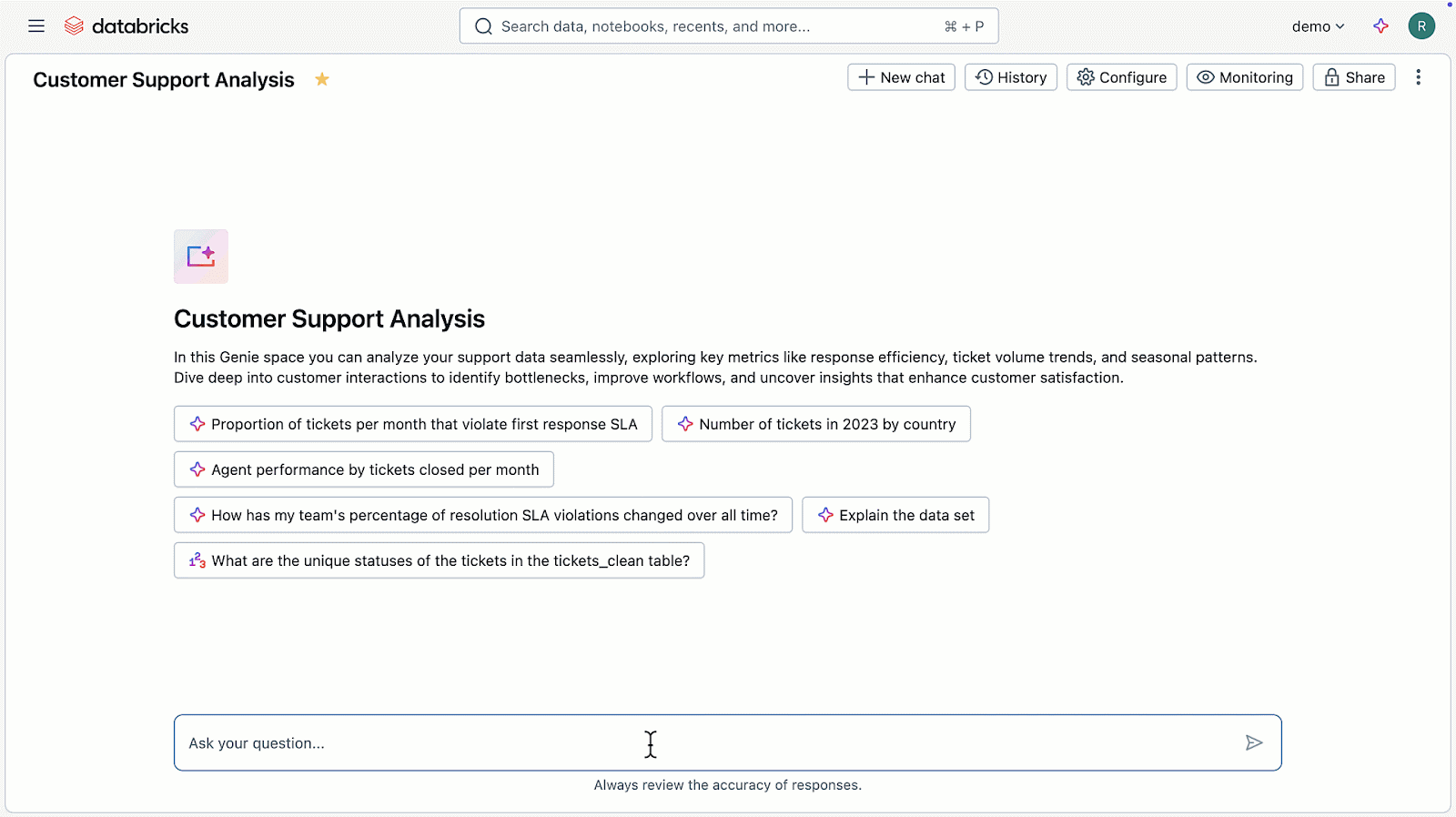
Databricks AI/BI Genie in action - Source: Databricks.
AI/BI Genie uses a compound AI system rather than a single, monolithic AI model.
Matei Zaharia and Ali Ghodsi, two of the founders of Databricks, describe a compound AI system as one that “tackles AI tasks using multiple interacting components, including multiple calls to models, retrievers, or external tools.”
Databricks AI/BI Genie has been generally available since June 12, 2025.
Before exploring the capabilities of Databricks AI/BI Genie, let’s quickly refresh the concept of Natural Language Interaction (NLI).
What is Natural Language Interaction (NLI)?
Permalink to “What is Natural Language Interaction (NLI)?”Natural Language Interaction (NLI) occurs when humans use their natural language, either by writing or speaking, to interact with computers.
This type of interaction has been largely enabled by Natural Language Processing (NLP) capabilities because of two fundamental factors:
- Breakthroughs in generative AI architecture
- The rise of large language models (LLMs)
There are significant benefits to using NLI, as it lowers the barriers of knowledge for non-experts to interact with data and applications.
A typical NLI use case would involve one of the following things, for example:
- Recommendations: Brainstorming an idea for improving a business process based on the current documentation and context.
- Database lookups: Asking a question about a business unit’s performance by looking up a database table in natural language.
- Research assistance: Understanding and researching a topic intensively by looking up a plethora of credible sources of information.
But what does this exactly mean for the Databricks AI/BI Genie, and how can you use that feature? Let’s find out in the next section.
What are the key aspects of Databricks AI/BI Genie?
Permalink to “What are the key aspects of Databricks AI/BI Genie?”Databricks AI/BI Genie enables data intelligence and AI-powered insights by leveraging the following key aspects:
- No-code Natural Language Interface: Using the no-code interface, you can ask questions in plain English. AI/BI Genie translates them into analytical queries and presents the information you need to further your analysis.
- Compound AI framework: Databricks AI/BI Genie is equipped with a compound AI system consisting of an army of specialized agents, each handling tasks typically supported by a BI tool.
- Self-service insights: Enables everyone in your organization to “talk to their data” through its conversational interface, thereby going beyond traditional reports and dashboards.
- Customization: AI/BI Genie can be tailored to fit specific organizational needs, adapting its capabilities to different teams and workflows.
- Human feedback learning: AI/BI Genie continuously improves its answers based on human input, ensuring responses are trustworthy and reliable.
- Usage and adoption monitoring: Tracks interaction logs to enhance response quality and understand usage patterns across the organization.
- Integration with Unity Catalog: AI/BI Genie uses the Unity Catalog’s metadata foundation to help you oversee data access governance, in compliance with your organization’s data governance policies.
- Integration with Databricks tools: AI/BI Genie also works closely with AI/BI Dashboards, Genie Spaces, Databricks SQL, and Databricks One to provide a holistic experience of all the data stored or processed within the Databricks ecosystem.
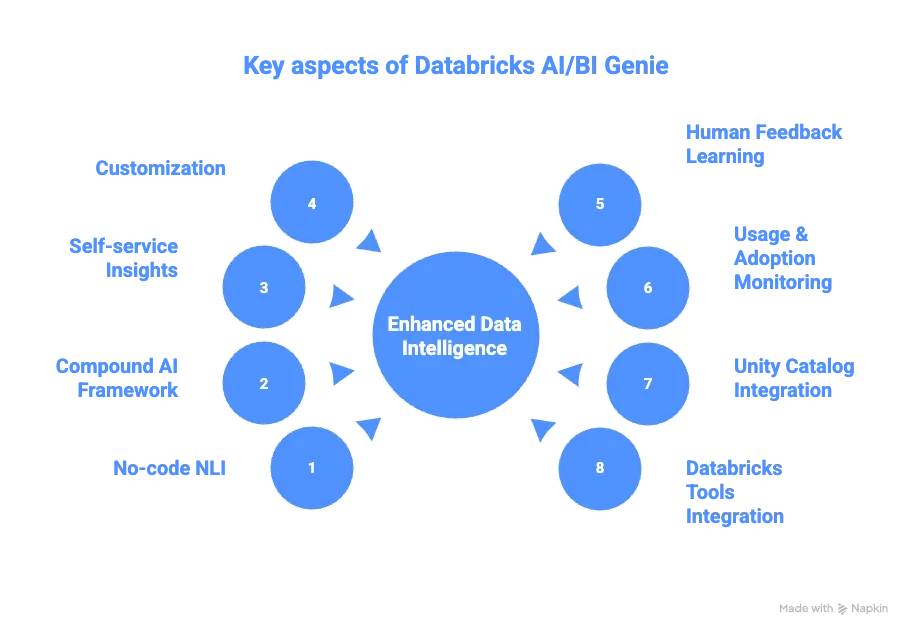
8 key aspects of Databricks AI/BI Genie - Image by Atlan.
Eliminate fragmented data and siloed insights and drive data and AI use cases with Databricks Unity Catalog and Atlan
Book a Demo →How does Databricks AI/BI Genie address privacy and security concerns?
Permalink to “How does Databricks AI/BI Genie address privacy and security concerns?”Like other Databricks features, AI/BI Genie utilizes several methods to secure and protect data against unauthorized access. These include:
- Role-based access control
- At-rest and in-transit encryption (including customer-managed key solutions)
- Comprehensive data & AI governance
For added security, Databricks supports private networking and defense-in-depth measures, such as VPCs/VNets, PrivateLink, and network policies.
For AI/BI Genie specifically:
- You can manage permissions in Genie Spaces, including who can access and manage trusted data assets within Databricks.
- You can restrict table selection and set fine-grained access controls across securable objects in Unity Catalog.
Maximize ROI of your tech stack by integrating Unity Catalog and Atlan
Book a Personalized Demo →What are the seven best practices for getting the most out of AI/BI Genie?
Permalink to “What are the seven best practices for getting the most out of AI/BI Genie?”Dr. Philip Laserstein and Sebastian Kollmann, both solution architects at Databricks, suggest the following seven best practices:
- Establish a strong context and metadata foundation that encompasses lineage, documentation, and query history.
- Add organization-specific information, instructions, and clearly-defined examples of questions and answers with the Genie interface.
- Only use the data assets that you absolutely need for your use case, as “the more coherent and semantically connected your data is, the better Genie will work.”
- For Genie to get the most out of the data assets, make sure that you document and annotate your data. This process of annotation can also be coupled with AI-generated documentation.
- Capture and share business context and information with Genie so that it can use your organizational language and constructs while responding to queries.
- Document predefined queries for predefined queries to get as deterministic results as you possibly can. This can be done by creating a query behind a UDF and registering that UDF as a trusted asset.
- Continuously monitor the quality of the responses and keep trying to improve the prompts and instructions to get the most reliable output.
Also, read → Best practices for curating a Genie space effectively | DL/BI Genie best practices from DBSQL SME Engineering
How does AI/BI Genie integrate with Unity Catalog?
Permalink to “How does AI/BI Genie integrate with Unity Catalog?”AI/BI Genie relies on Unity Catalog’s metadata foundation to help you understand data semantics and govern data assets, while providing a framework for granular access control.
AI/BI Genie integrates with Unity Catalog in the following ways:
- AI/BI Genie gets rich metadata from the Databricks ecosystem, including data lineage, documentation, annotations, tags, and query history.
- AI/BI Genie also gains access to relational metadata, which captures the relationships between various data assets and securable objects. This gives some context to the Genie, even in the absence of documentation.
While Unity Catalog is great for a Databricks-centric data ecosystem, many enterprises use a wide variety of tools. That’s where the native Unity Catalog might not suffice, and you might need a metadata control plane to manage data assets across the organization.
Let’s discuss what you need for that in the next section.
How to activate metadata with Atlan’s metadata control plane
Permalink to “How to activate metadata with Atlan’s metadata control plane”The need for a metadata control plane arises when an organization uses a wide range of tools, each with its own internal technical catalogs, which can’t be leveraged for metadata-based automation at scale. In such situations, what you need is a sort of catalog of catalogs, where the Unity Catalog is just one of many catalogs.
Atlan is one such tool that is architected on top of a metadata control plane foundation. It is designed to integrate with a wide range of connectors, sources, and target systems, allowing it to both pull and, in some cases, push data back to them.
It is a metadata activation platform that enables you to automate data management using metadata.
It is built on a strong metadata foundation to provide your data stack with a control plane for all your data, leverage existing internal technical dictionaries and catalogs, such as Unity Catalog, among others.
Let’s take a look at how the team at Yape leveraged Atlan.
Real customers, real stories: Activating Databricks metadata using Atlan
Permalink to “Real customers, real stories: Activating Databricks metadata using Atlan”Yape, a financial services company that offers a P2P digital wallet to more than 13 million users across Peru, introduced Atlan in their data stack as a proof of concept, where it scored very highly.
Soon enough, team members began using Atlan to discover data assets, documentation, and other relevant context surrounding data. The team at Yape found that they needed something more than Databricks for managing their metadata if they wanted to stay ahead of their competition.
“More than Databricks, we needed a platform for innovation to stay ahead of our competitors. We might know what we need right now, but if the market is moving in a new direction, with AI and ChatGPT, for example, we need to have an answer for that, and the opportunity to try these tools in our data catalog. That’s what I really liked about Atlan.” - Jorge Plasencia, Data Catalog & Data Observability Platform Lead at Yape
Yape appreciated Atlan’s easy-to-use interface and state-of-the-art features related to data governance and data contracts, among others, all powered by the framework of metadata activation.
Join Yape and hundreds of other data teams activating their metadata with Atlan
Book a Personalized Demo →Final thoughts on Databricks AI/BI Genie
Permalink to “Final thoughts on Databricks AI/BI Genie”Databricks AI/BI Genie is a state-of-the-art natural language interaction tool that enables you to interact with your data for discovery, exploration, and analysis, among other purposes. It integrates with Unity Catalog as the core metadata store, which could work well if Databricks is the only tool you’re using in your organization.
However, teams in medium and large enterprises are typically independent in choosing their tools. In such cases, Unity Catalog alone is usually insufficient to support all these tools, and that’s where the need for a metadata control plane arises.
A metadata control plane is the foundation using which you can activate your metadata for automation in discovery, lineage, governance, quality, among other things.
Find out how a metadata activation platform powered by a metadata control plane can help you achieve that and more.
Let us help you build it
Book a Personalized Demo →FAQs about Databricks AI/BI Genie
Permalink to “FAQs about Databricks AI/BI Genie”1. Is AI/BI Genie an AI agent?
Permalink to “1. Is AI/BI Genie an AI agent?”Databricks AI/BI Genie can be considered as a compound AI agent. It uses multiple large language models (LLMs) and a system of specialized AI agents that handle various tasks typically associated with business intelligence (BI) tools—such as query generation, visualization, summarization, and semantic understanding.
As a result, Databricks AI/BI Genie:
- Behaves like an AI agent for BI tasks
- Can be customized, learns from feedback, and integrates tightly within the Databricks ecosystem of tools
- Has a multi-agent architecture, making it more sophisticated than a single monolithic AI tool
2. What is a Genie Space?
Permalink to “2. What is a Genie Space?”A Genie Space is a no-code user interface for business users to interact with the organization’s data using natural language. It’s configured to utilize as much business and data context as possible, leveraging table names, column descriptions, annotations, and in-line code comments, among other features.
It can be seen as a local knowledge store, blending semantics from existing Databricks assets with feedback provided by data analysts.
3. What are AI/BI Dashboards?
Permalink to “3. What are AI/BI Dashboards?”An AI/BI Dashboard is an AI-driven business intelligence dashboard that enables you to create and serve reports and data visualizations, such as charts and graphs, as well as reports with interactive components like filters, drill-downs, and other features.
AI/BI Dashboards allow you to ask questions about the data in your natural language. AI/BI Dashboards, especially when coupled with AI/BI Genie, provide a simple way for any business user to generate advanced business insights, thereby democratizing data within your organization.
4. What role does metadata play in enabling AI/BI Genie?
Permalink to “4. What role does metadata play in enabling AI/BI Genie?”AI/BI Genie generates responses based on several factors, including, but not limited to:
- Unity Catalog metadata
- Column names and descriptions
- Manually enriched business context
- History of SQL queries
- Explicit instructions
- History of prompts and responses
5. Does AI/BI Genie integrate with other BI tools?
Permalink to “5. Does AI/BI Genie integrate with other BI tools?”AI/BI Genie connects with a range of BI tools, including Hex, Power BI, Preset, Qlik, Sigma, and Tableau.
6. Which large language models does AI/BI Genie use?
Permalink to “6. Which large language models does AI/BI Genie use?”AI/BI Genie has moved away from relying on a single AI model or system. It utilizes what can be best described as compound AI systems. These systems don’t rely on monolithic LLMs but rather employ a range of components, interactions, and enrichments to respond to a query.
Share this article
Atlan is the next-generation platform for data and AI governance. It is a control plane that stitches together a business's disparate data infrastructure, cataloging and enriching data with business context and security.
Databricks AI/BI Genie: Related reads
Permalink to “Databricks AI/BI Genie: Related reads”- Databricks Unity Catalog: A Comprehensive Guide to Features, Capabilities, Architecture
- Data Catalog for Databricks: How To Setup Guide
- Enterprise Metadata Management Solutions: Emerging Trends & Must-Have Product Capabilities in 2025
- Data Governance in Action: Community-Centered and Personalized
- AI and Data Governance Manifesto
- Snowflake Data Governance — Features, Frameworks & Best practices
- Open Source Data Governance Tools - 7 Best to Consider in 2025
- Compliance Metadata Management: The Key to Meeting AI & Data Regulations at Scale in 2025
- A Guide to Gartner Data Governance Research — Market Guides, Hype Cycles, and Peer Reviews
- 5 Popular Data Governance Certification & Training in 2025
- 8 Best Data Governance Books Every Data Practitioner Should Read in 2025
- Automated Data Governance: How Does It Help You Manage Access, Security & More at Scale?
- Data Governance and Compliance: Act of Checks & Balances
- Data Governance vs. Data Management: What’s the Difference?
- Enterprise Data Governance — Basics, Strategy, Key Challenges, Benefits & Best Practices.
- Data Governance Tools: Importance, Key Capabilities, Trends, and Deployment Options
- Data Governance Tools Comparison: How to Select the Best
- Data Governance Tools Cost: What’s The Actual Price?
- Data Governance Process: Why Your Business Can’t Succeed Without It
- Data Governance and Compliance: Act of Checks & Balances
- Data Compliance Management: Concept, Components, Getting Started
- Data Governance for AI: Challenges & Best Practices
- Regulatory Data Lineage Tracking for Audit Success in 2025
- A Guide to Gartner Data Governance Research: Market Guides, Hype Cycles, and Peer Reviews
- Gartner Data Governance Maturity Model: What It Is, How It Works
- Data Governance Maturity Model: A Roadmap to Optimizing Your Data Initiatives and Driving Business Value
- Data Governance vs Data Compliance: Nah, They Aren’t The Same!
- Data Governance in Banking: Benefits, Implementation, Challenges, and Best Practices
- Open Source Data Governance - 7 Best Tools to Consider in 2025
- Federated Data Governance: Principles, Benefits, Setup
- Data Governance Committee 101: When Do You Need One?
- Data Governance for Healthcare: Challenges, Benefits, Core Capabilities, and Implementation
- Data Governance in Hospitality: Challenges, Benefits, Core Capabilities, and Implementation
- 10 Steps to Achieve HIPAA Compliance With Data Governance
- Snowflake Data Governance — Features, Frameworks & Best practices
- Data Governance Roles and Responsibilities: A Round-Up

